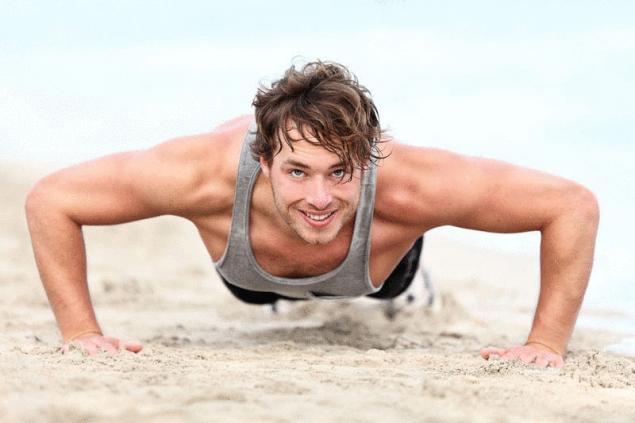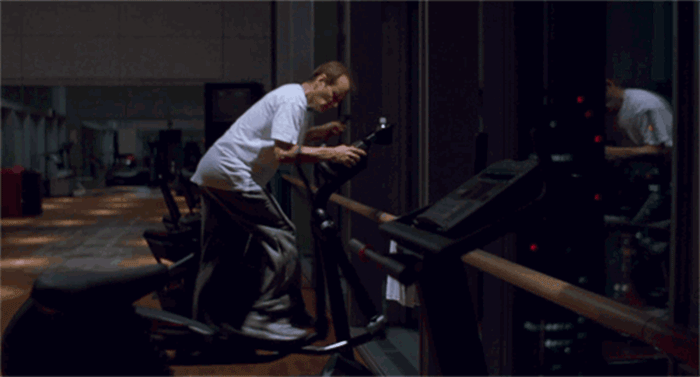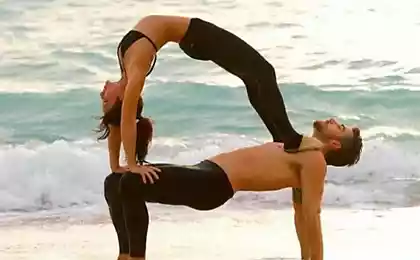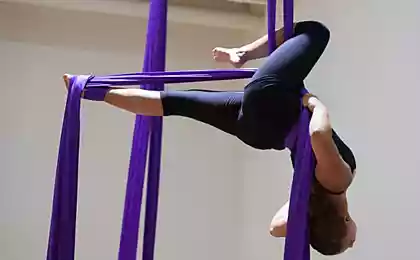737
The science of fitness: what you need to know about cortisol, superfood and high-intensity training

What is glycogen and why is it important? Most studies of the effect of glycogen on the body of the athlete occurred in the 80-ies and 90-ies of XX century. This polysaccharide is the main storage form of carbohydrates in animals and humans and is found predominantly in muscle and liver. It meets the energy needs of the body, converted into glucose.
This happens during exercise by approximately 20 minutes of training. After some time the glycogen stores are depleted, the cells can not cover the consumption of glycogen and start to burn the fats. The most effective way to burn fat is running and other cardio (swimming, aerobics, skiing). Slow Jogging fat burning comes after the 40-minute workout. If you run faster then the fat will start to disappear after 20 minutes. But in the quest to lose weight also need to know the measure. If you run more than 10 miles a day, the body begins to use energy not only fat, but also proteins, which can lead to muscle loss.

In addition, it is important to remember that the more muscle glycogen, the greater the potential energy that the body can use. Accordingly, after each workout you need to restore muscle glycogen stores.
How to do this most efficiently? According to the study by researchers at the University of Texas K. M. Zawadzki, B. M. and J. Yaspelkis.L. Evie, "the glycogen stores in the muscles after exercise can be restored by the addition of [the body] of carbohydrates and proteins and their impact on insulin secretion". Another study published by a team of scientists in February 2004 in the Journal of Applied Physiology, says that eating 100 grams of carbohydrates after a workout enhances anabolic processes in the body (that is, the processes aimed at the renewal and growth of tissues, including muscle). It is best to eat immediately after a workout, about half an hour. Refueling body with nutrients at this time will contribute to the most rapid muscle growth — this, in particular, according to the study published in 2001 in The American journal of Psychology—Endocrinology and Metabolism.
What carbs to use?It needs to be products with a low glycemic level, i.e. complex carbohydrates. It is believed that one should avoid fructose — it is not harmful, but not very effective, as it promotes the production of insulin to a lesser extent. Categorically should not be consumed after a workout the sugar, and to eat junk food and fatty foods in General (including, for example, 5% cheese). After training for a couple of hours forget about tea and coffee caffeine affects insulin levels and thereby inhibits the restoration of glycogen. The fact that glucose present in the body, converted into glycogen under the influence of insulin.
The perfect combination of carbohydrates for the meal after training is the maltodextrin and dextrose in a 1:1 ratio. These carbohydrates are contained in many sports supplements. Of course, taking them not necessarily — you can do the usual food. There are medical studies that claim that a correct lunch after exercise should contain 80% protein and 20% carbohydrates. This can be, for example, Turkey fillet with whole grain cereal or bread.
With regard to nutrition to training, to be eaten 30-40 minutes prior to training. Food should be light, for example, yogurt, yogurt, fruit or granola. You should never do on an empty stomach — the body will quickly Deplete energy reserves.
Glutamine: the truth and mythsIs an essential amino acid. It is part of the protein and is needed for muscle growth — they are 60% composed of glutamine. In this regard, the glutamine extremely popular in bodybuilding and sports diets. However, there is no research unequivocally proving the usefulness of glutamine in sports nutrition. But a number of scientists deny it.
One such study was published in the European journal of applied physiology. It was in observing the two groups of athletes — one within six weeks of taking glutamine and others don't. By the end of the observation of physical performance of athletes was the same.Is it worth to fight against cortisolCortisol is a stress hormone with catabolic effects. In other words, it destroys muscle tissue, increases the level of glucose in blood, contributes to the accumulation of body fat. In General, this is a nightmare of any athlete. Many struggle with it as I can, and it's not just about strict diet completely eliminates sugar, caffeine and fast carbohydrates, but also on medicines that reduce cortisol levels. This can lead to the other extreme — lack of cortisol is no less dangerous. The fact is that cortisol is very important for relaxation of muscles. It also has anti-inflammatory action. When the muscles hard to relax, are experiencing trauma, inflammation and lacerations. Because of the pain the athlete can train more and lose time on the recovery. Everything you need to know in order not to increase the level of cortisol above normal is that training should be moderate. A study published in the Journal of the International Society of Sports Nutrition, suggests that after 45 minutes of physical nagruzok cortisol levels begin to rise, and it is then desirable to stop.
Overrated SuperfoodsSuperfoods is a very hot topic lately phenomenon. Call a number of products, for allegedly possessing a very high nutritional properties, making them particularly fond of athletes and dieters. Too often, however, declared properties are a marketing hoax. Let's consider this phenomenon on the example of Goji berries. Everywhere it was claimed that this product has the highest level of vitamin C in the world. But in fact it turned out that they are no more than other fruits and berries, for example, in citrus. It was also reported that the consumption of Goji berries can help prevent breast cancer in 75% of cases. Talked about this American nutritionist Earl Mindell with reference to clinical trials the cancer center at Memorial Sloan-Kettering. But in fact, the center of such tests are not conducted. In addition, there is no proven way to prevent cancer, only to reduce its risk. Therefore, Superfoods are unlikely to occupy a special place in sports nutrition, although they probably can't hurt.High-intensity workoutApps with a seven-minute workouts win smartphones all over the world. Their meaning is that short workouts with high load can replace a workout in the gym. These applications are based on the Protocol of the TABATA system high intensity exercise, which was developed in 1996-1997, Izumi TABATA, former coach of the Japanese national team in skating. The TABATA Protocol is the alternating 20-second approaches to the limit with 10-second cycles of rest. According to the original Protocol, TABATA training takes only 4 minutes. When such workouts, the body absorbs the maximum possible amount of oxygen. As a result, the metabolic rate increases, therefore, faster to burn fat and grow muscle mass.

Some supporters of training in the gym called high-intensity exercise not only as a hack. However, research suggests otherwise. Here are some of them:
In 2007, American College of Sports Medicine, Florida, compared the two groups: the first was engaged in heavy training, and the second continuous workouts normal intensity. The first group on average a day burn 10% more calories. A study conducted in Australia showed that women doing a 20-minute high-intensity cardiovascular training (running 8 seconds, 12 seconds rest) lost 6 times more fat than participants that were running continuously with an average pace for 40 minutes.
The study, published in the Journal of the International Society of Sports Nutrition, suggests that men during 6 weeks of high-intensity dedicated training in 15 minutes a day and taking beta-alanine, scored 750 g lean mass, although not engaged in strength training. In addition, high-intensity workout is quick and convenient, as they require only a spare room and seven minutes of time. They can deal with even the busiest people.published
Author: Andrey Kovalev
P. S. And remember, only by changing their consumption — together we change the world! ©
Source: theoryandpractice.ru
Your children are not Your children
Hawthorn: the most unpretentious, decorative types, features of cultivation






















